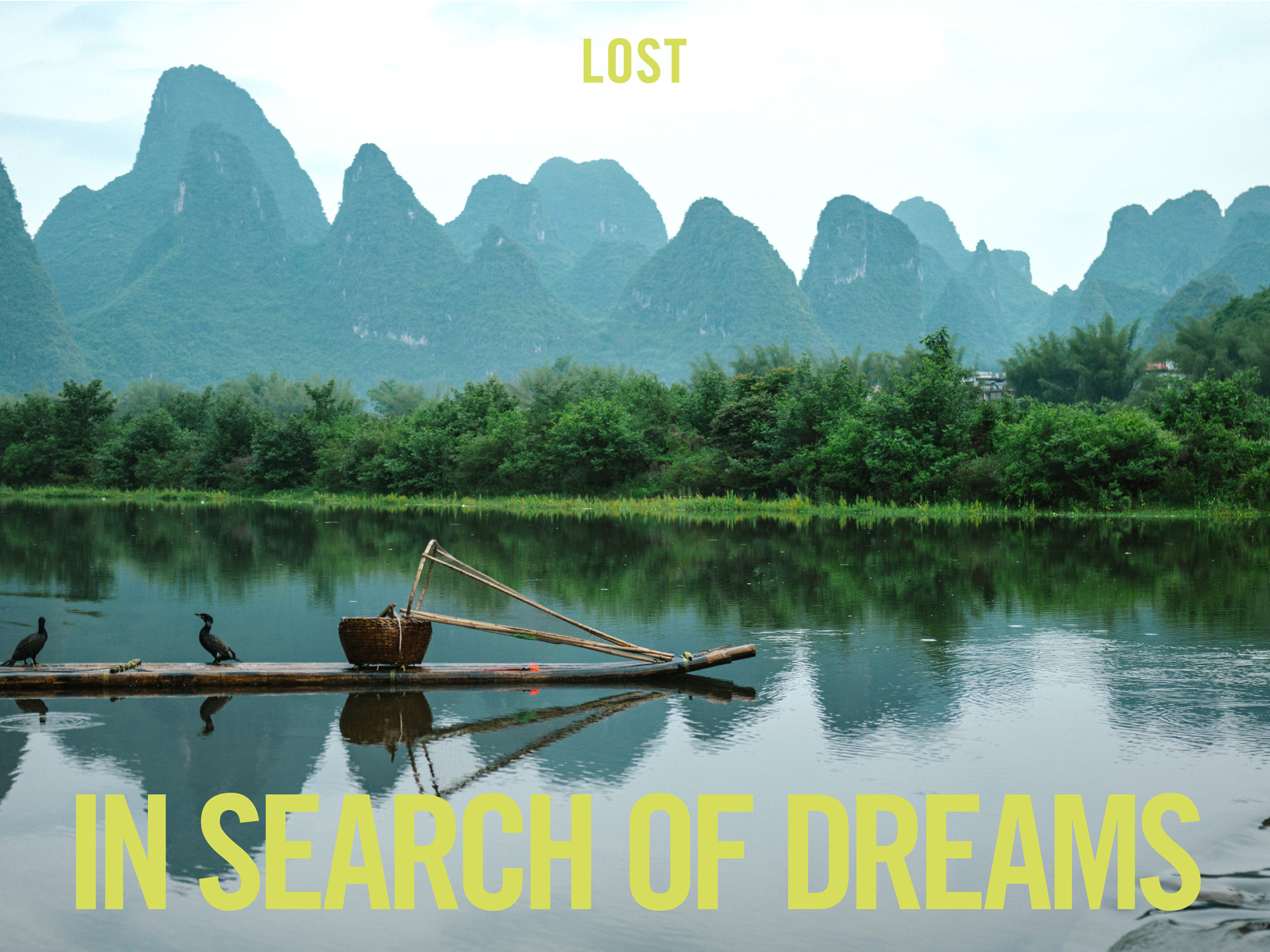
IN SEARCH OF DREAMS
WORDS AND PHOTOGRAPHY / NELSON NG
PRODUCED BY LOST IN PARTNERSHIP WITH LOUIS VUITTON
Three locations. Nine days. We had been invited to tag along on a Louis Vuitton photoshoot in China. It was to be an intense trip, travelling across different cities and provinces, riding in planes, cars, boats, golf carts, and sometimes hiking, to remote places. The itinerary? Ancient temples, Buddha caves, winding rivers with bamboo rafts, mystical hills, and otherworldly mountains — what one usually only hears about in fairy tales. It would be a journey to discover places from our imagination.
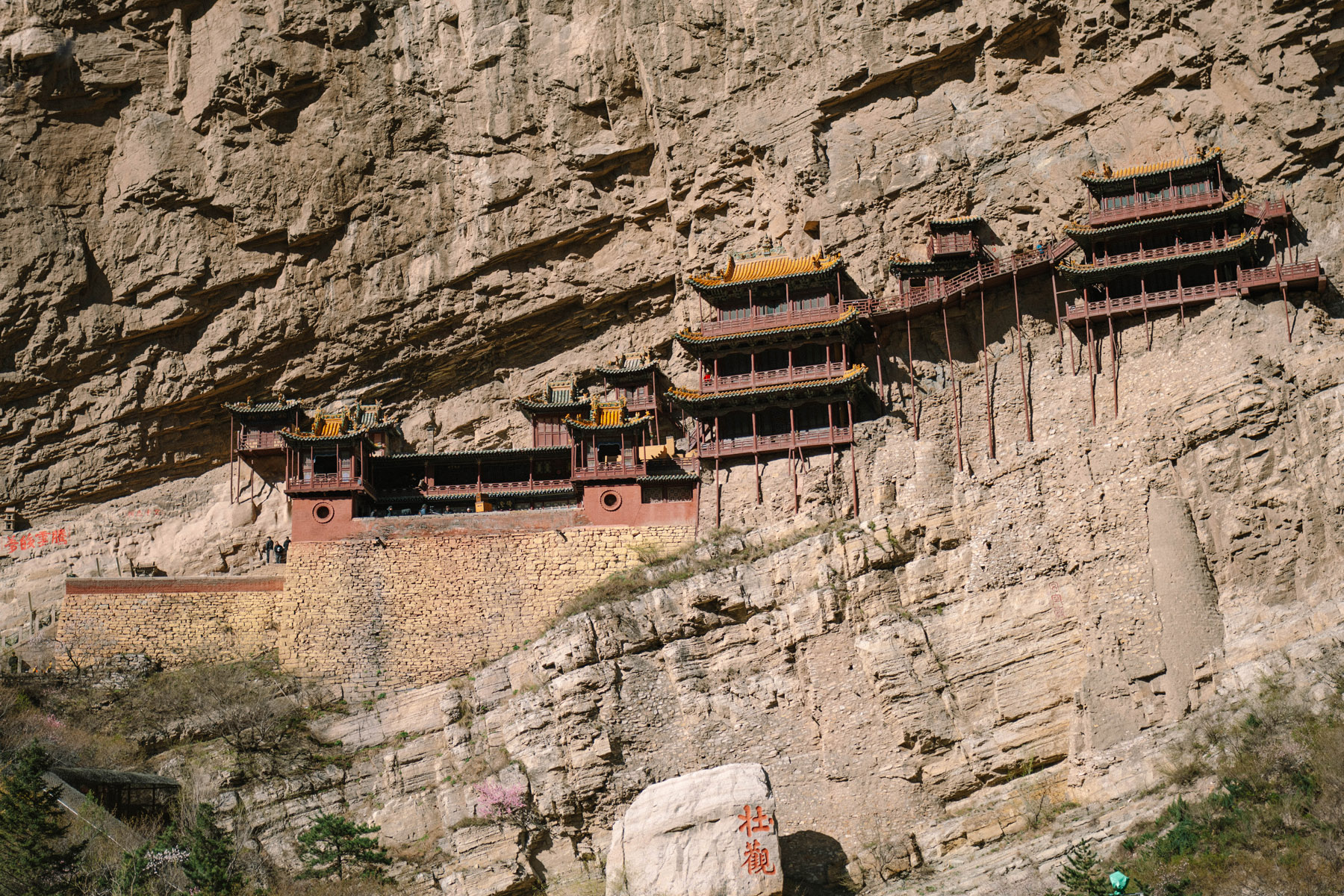
1
DATONG
STEPPING
INTO MYTHS
Travel, sometimes, is all about having a sense of wonder about the world. That childlike innocence of discovering something intriguing around you, and to be curious about what the universe holds. It’s about regaining that feeling you had when you were young, when the world still felt unexplored and full of possibilities.
Arriving in Datong felt like that. It was located in the northern Shanxi province of China, and was a frontier land between the agricultural lands of China and the Great Steppe. As we were being driven from Taiyuan airport to our hotel in Datong, our driver mentioned that we passed by Yanmen Pass, a famous and strategic mountain pass along the Great Wall of China, which controlled access between the valleys of central Shanxi and the Great Steppe. It played an important role in many Chinese legends and stories, such as “The Generals of the Yang Family” and was also the place where the hero Qiao Feng sacrificed himself in “Demi-Gods and Semi-Devils”. It was the stuff of legends.The team doing the shoot comprised of many talented individuals from different places. It was an international mix of talent — we had representatives from Louis Vuitton from Paris and Shanghai, creatives from Be Good Studios in Los-Angeles including the creative director, Lina Kutsovskaya, who directed the shoot, and renowned documentary American photographer Alec Soth who came with his crew to make it all happen. In addition, we had set designers, camera crew and videographers from China who provided support. It was not a small team, and for me it was quite a spectacle watching everyone work together in different languages — English, French and Mandarin — and operate on such a scale.
The team doing the shoot comprised of many talented individuals from different places. It was an international mix of talent — we had representatives from Louis Vuitton from Paris and Shanghai, creatives from Be Good Studios in Los-Angeles including the creative director, Lina Kutsovskaya, who directed the shoot, and renowned documentary American photographer Alec Soth who came with his crew to make it all happen. In addition, we had set designers, camera crew and videographers from China who provided support. It was not a small team, and for me it was quite a spectacle watching everyone work together in different languages — English, French and Mandarin — and operate on such a scale.
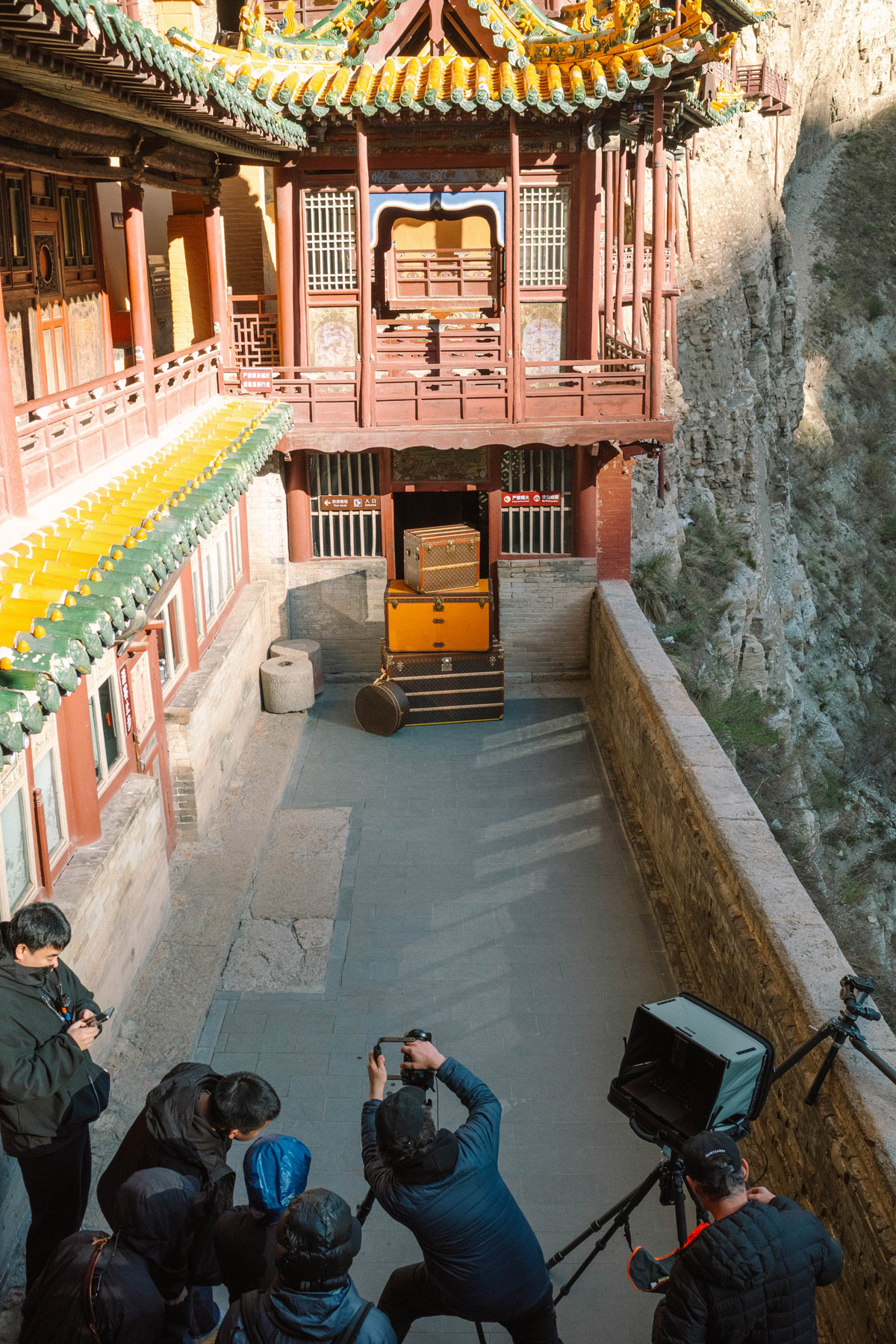
The first location of the shoot was at the Hanging Temple, a temple built more than 1,500 years ago into a cliff near Mount Heng. Due to production schedules, we set off at around 4:30 AM every morning. It was quite a challenge to wake up so early before dawn, but it was nice to explore the site without any tourists. The absence of people made the place feel spiritual.
When we arrived on the first day, the Hanging Temple looked unreal. From a distance, it looked like it was floating in the air. As we climbed up the steps to get closer to the temple, we saw the wooden beams that supported the many temple buildings. It was indeed an architectural marvel. The temple itself was not exactly an easy climb as it was narrow and steep in some places, which required you to use your hands to hold on to the sides to find balance. “This will wake you up,” said one of the girls as we were climbing the steep platforms. We were hanging 75 metres above ground with the wind blowing strongly against our faces. Combined with the spiritual motifs and statues in the temple, it honestly felt like we had indeed entered a mythical place.
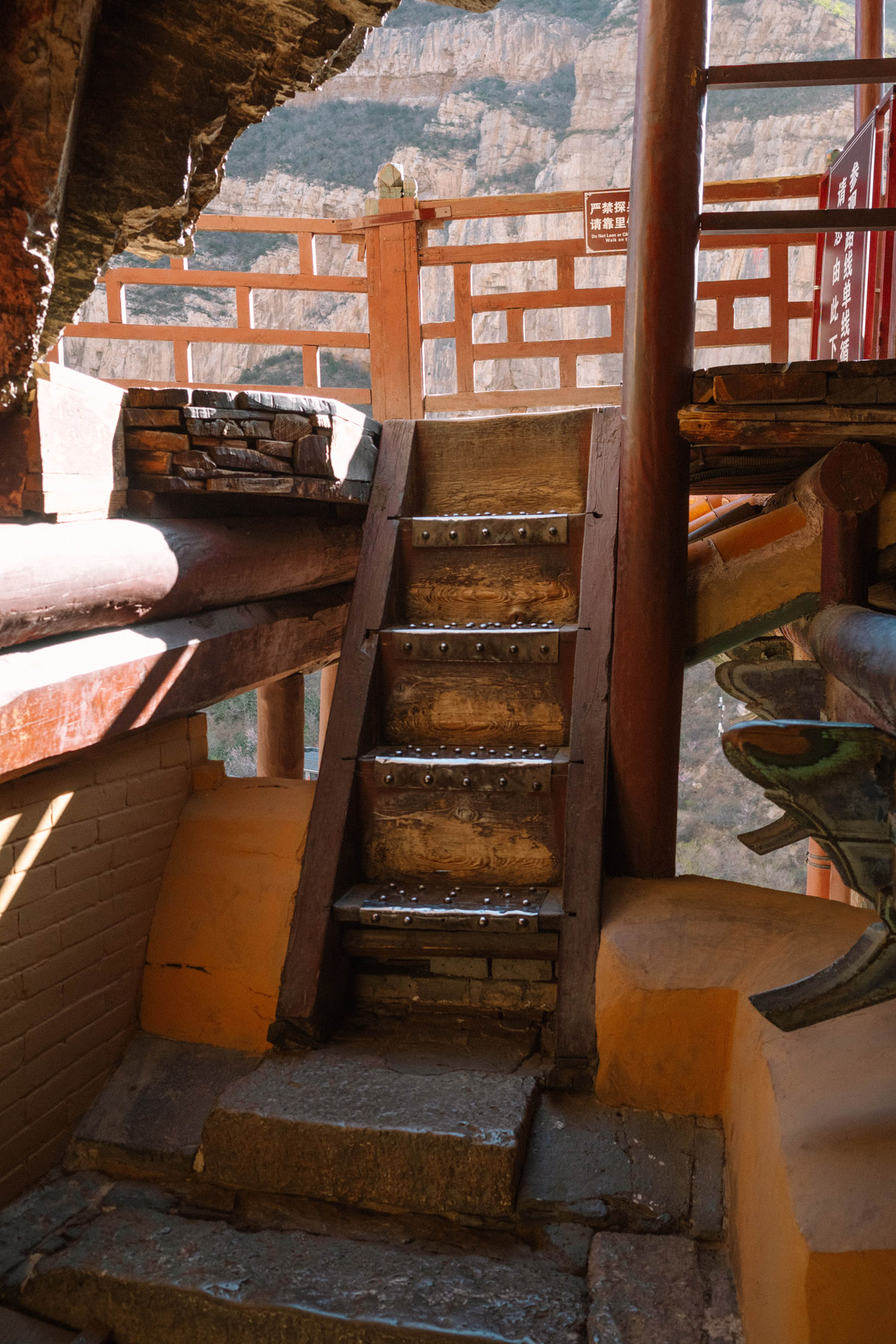
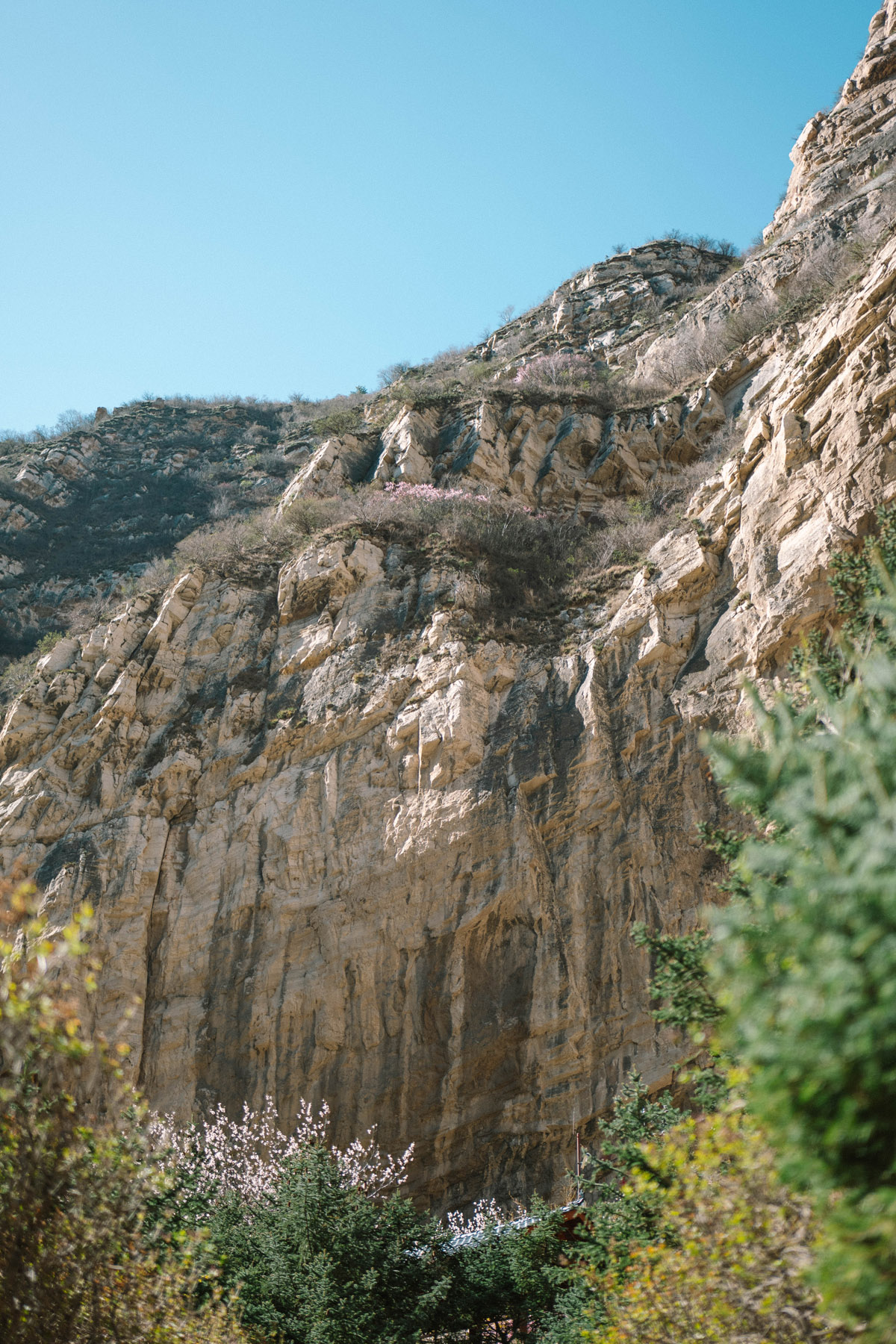
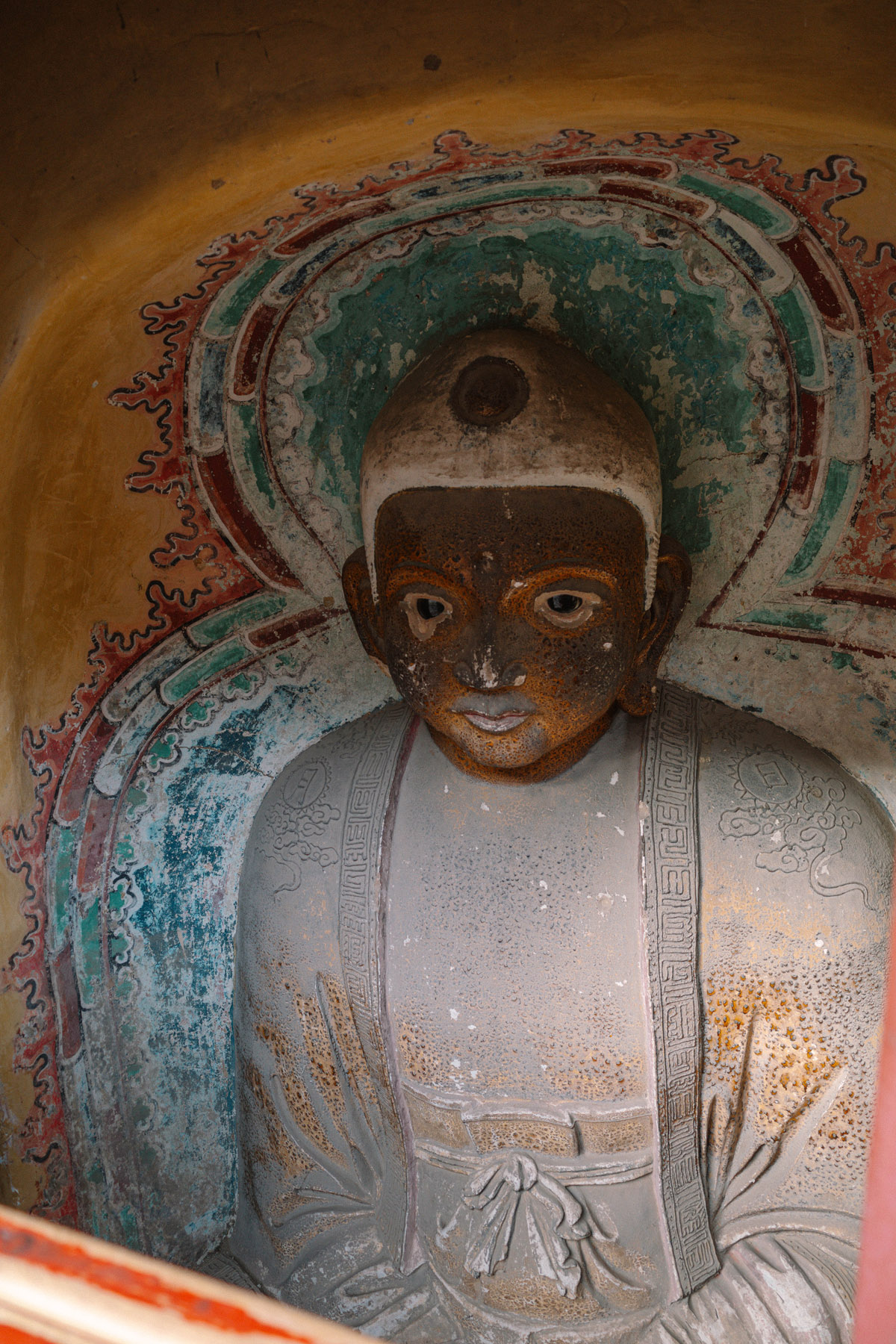
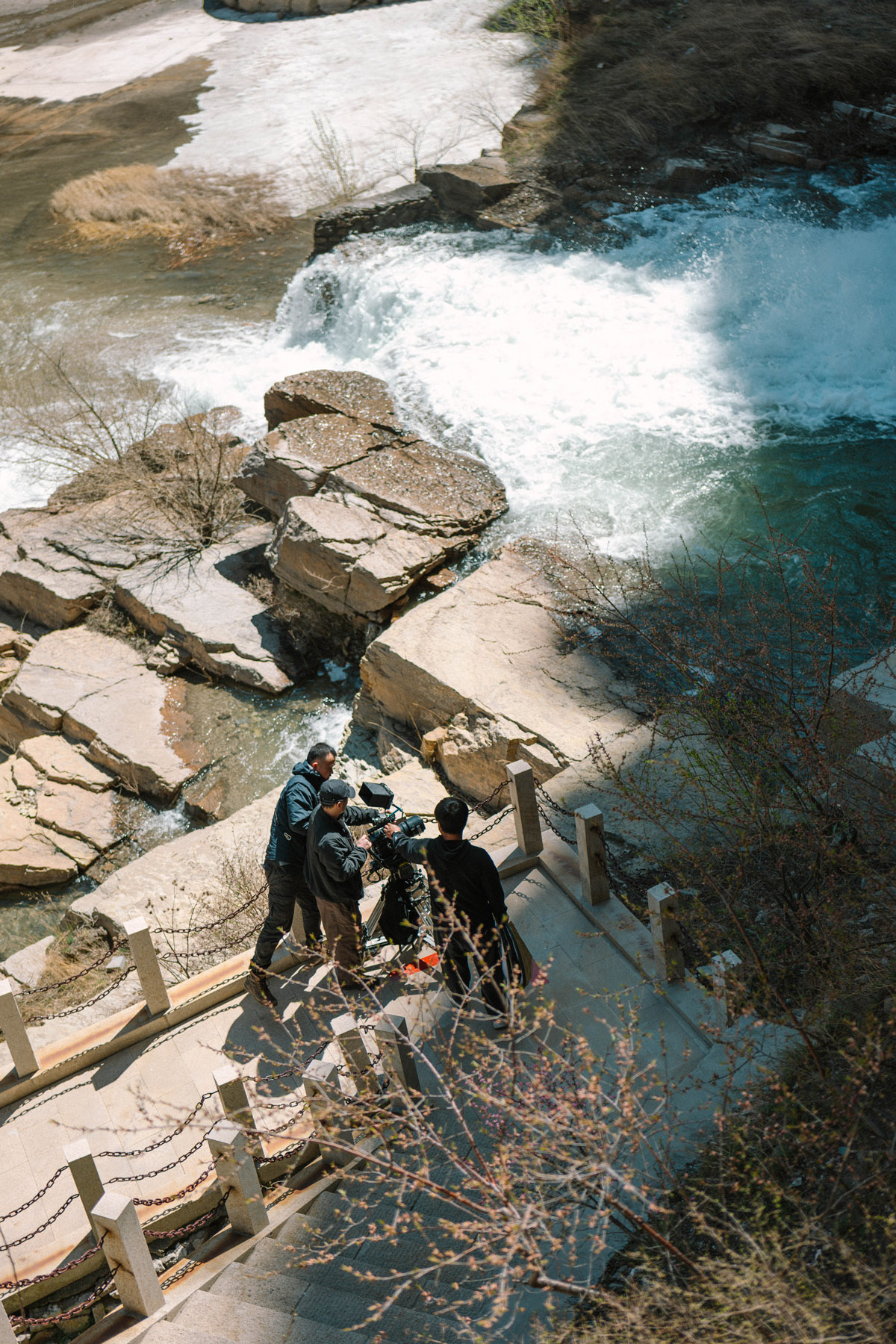
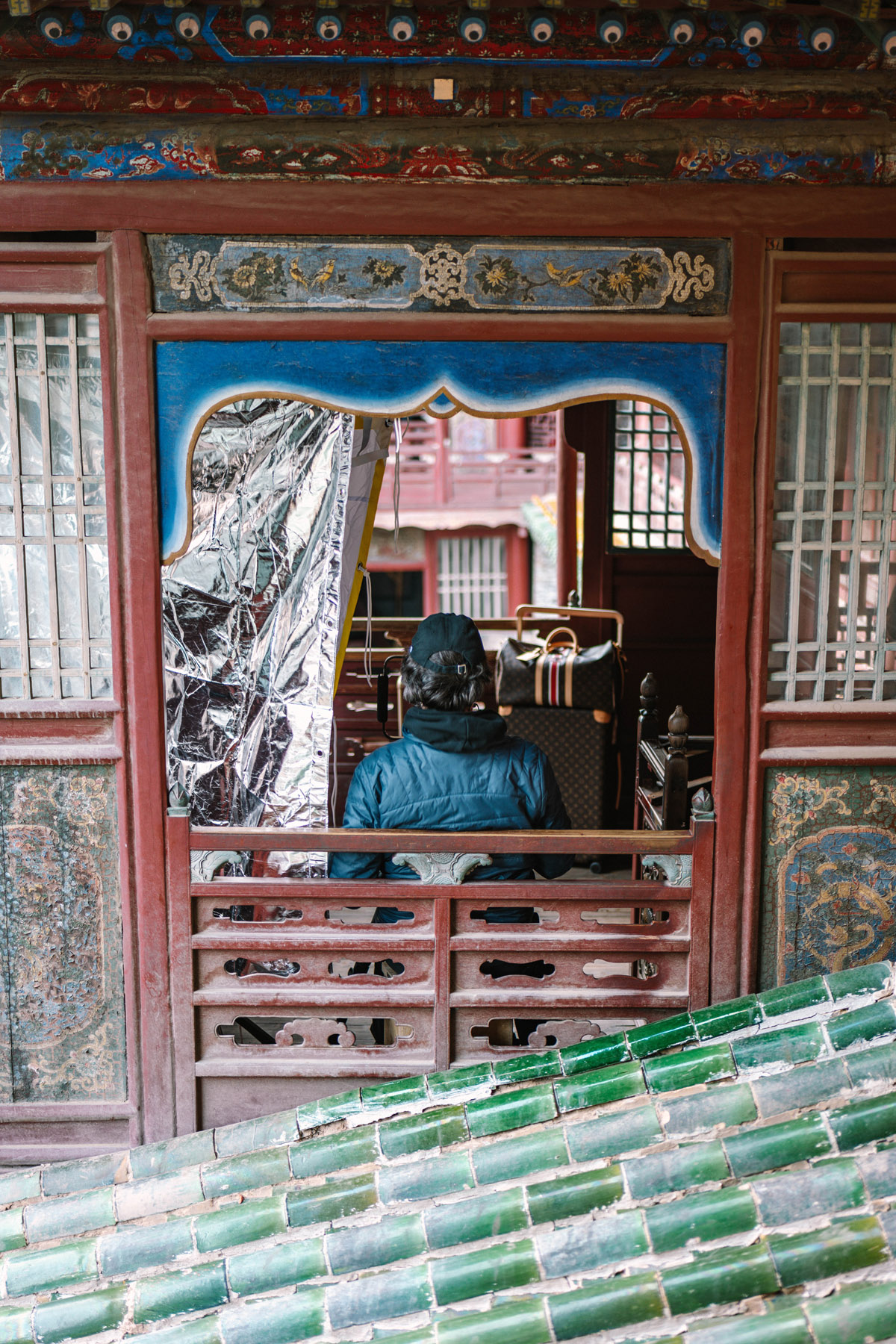
On the second day of the shoot, it was a race against time to finish everything before the tourists came in at noon. I watched in awe as the production team climbed up and down the steps to the temple with all the equipment. Every single Louis Vuitton bag, every piece of camera equipment, packet of food and bottle of water had to be hand-carried up to the location. Later on, they even carried a motorbike up to the temple for one of the shots. And when it was all over, they had to carry everything back down.
With some leftover time after the shoot, a part of the team decided to do some exploration around Datong. We had lunch in the old city of Datong — which contained many ancient buildings within old city walls — before heading over to the Yungang Grottoes. It was one of the most famous Buddhist sculptural sites in China, featuring rock-cut Buddhist cave-temples and massive Buddha statues carved directly into the sandstone cliffs. What struck me at the Yungang Grottoes, other than the size of the caves and the Buddha statues, was the amount of tourists there.
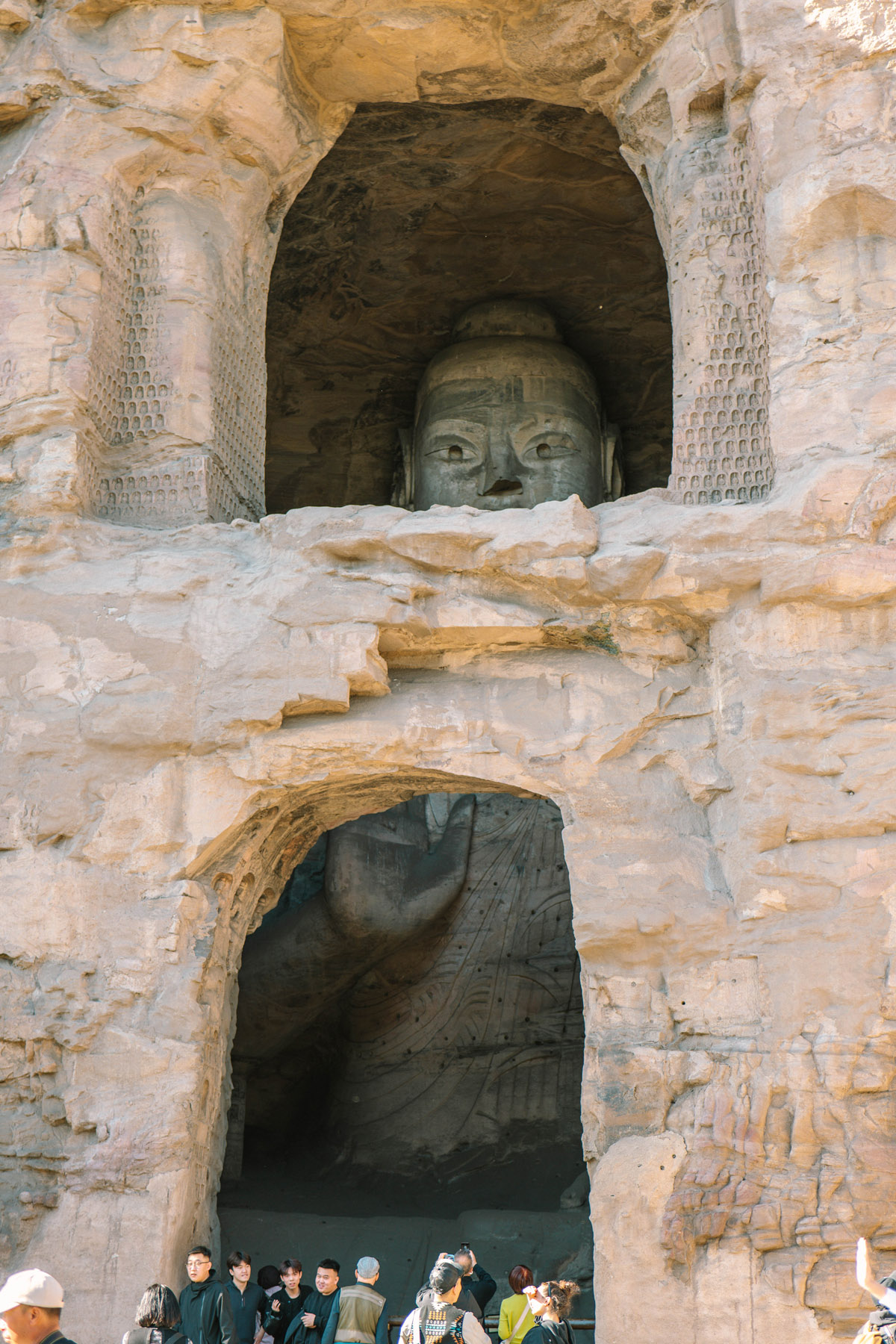
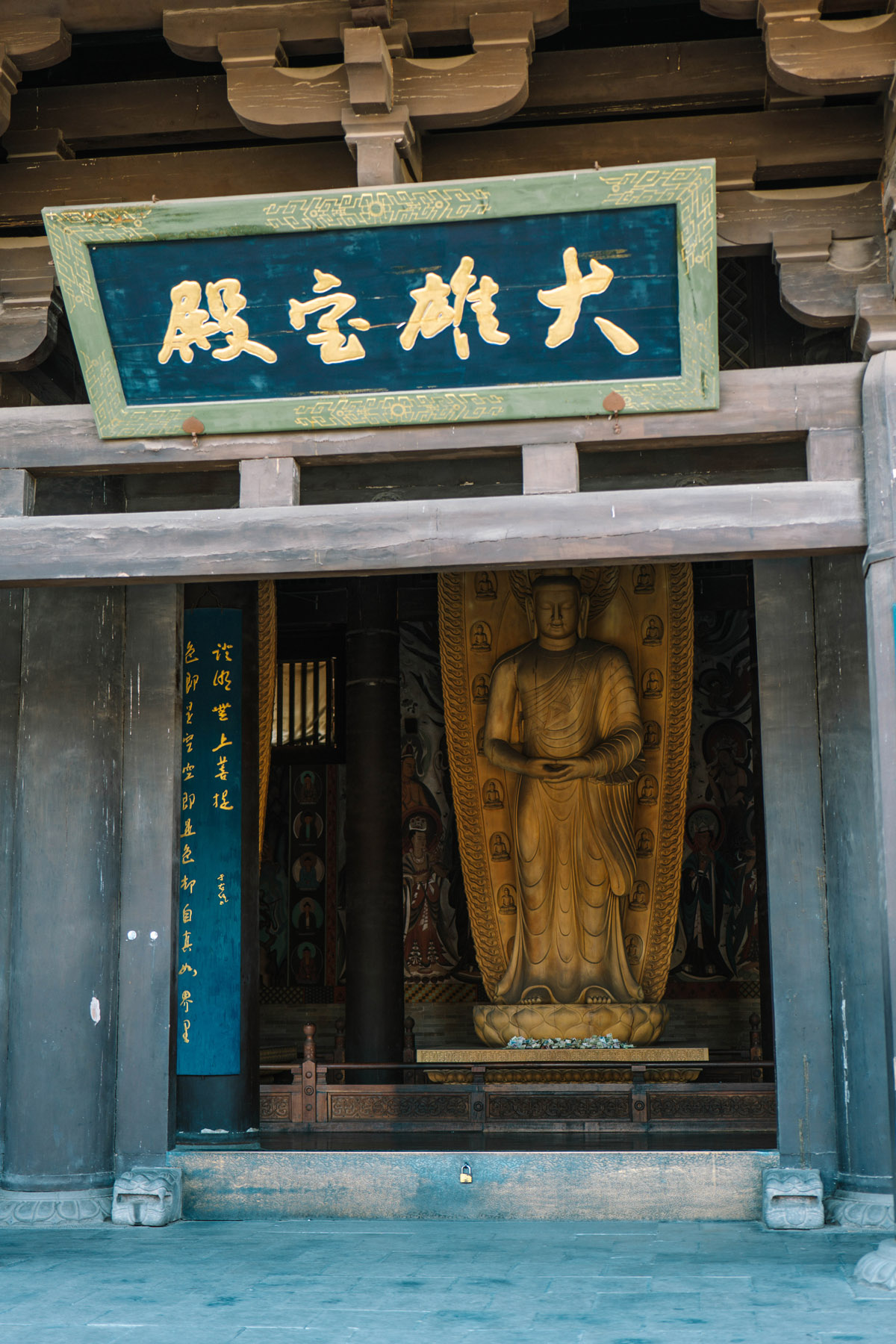
Apparently, Datong had garnered a lot of attention and tourists recently due to the popularity of a video game called “Black Myth: Wukong”. The game used a lot of real locations in Datong as references for settings visited by the main character in the game, including the Hanging Temple and the Yungang Grottoes and certain buildings in the old city, and so fans of the game flocked to visit these locations in person. Once again, people came looking for places that existed in stories, which made me wonder: What is a place without a story?
Perhaps people travel in search of myths.
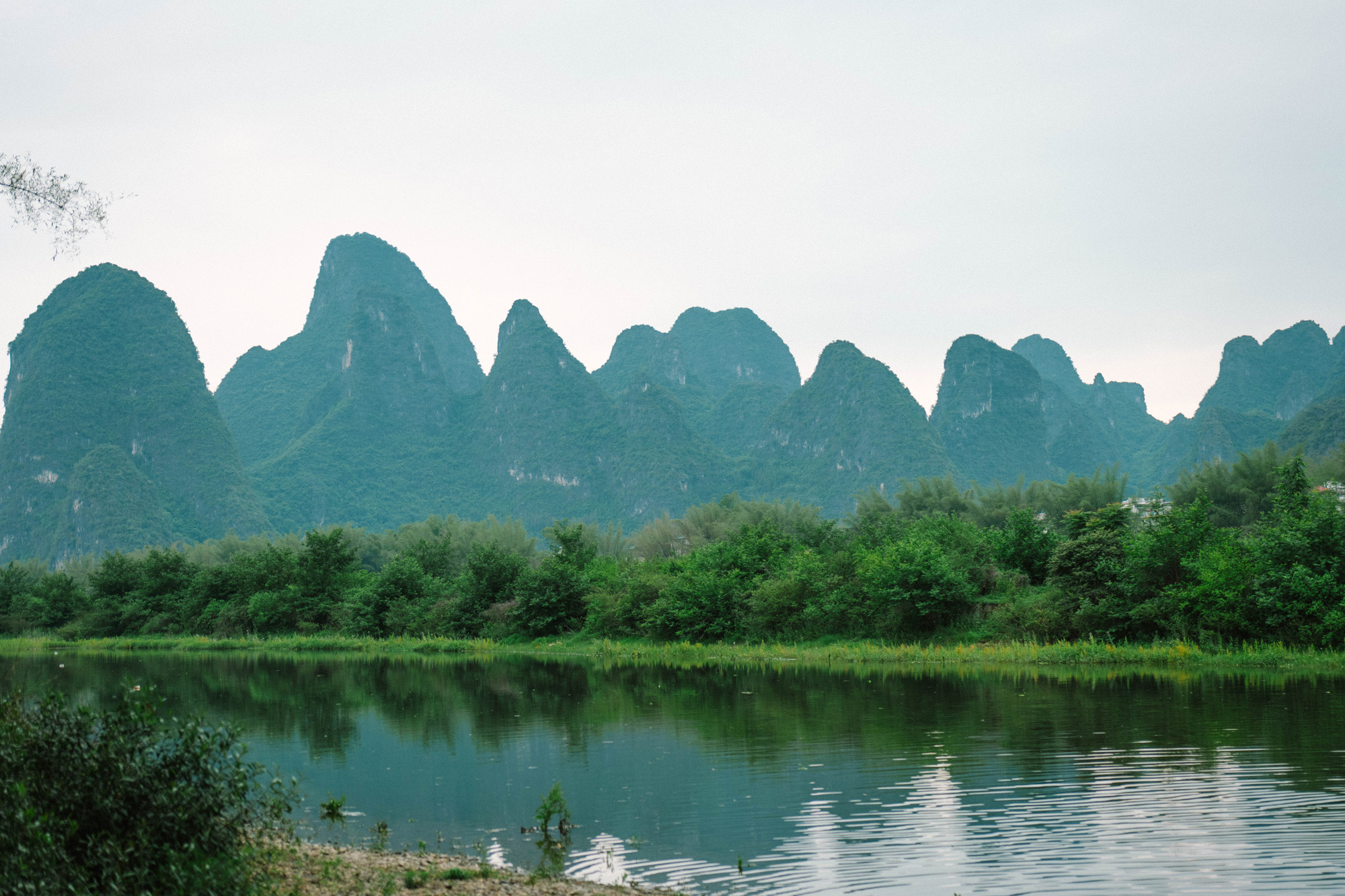
2
GUILIN
LANDSCAPE
PAINTING
You know you’re in Guilin when you smell fermented bamboo in the air. The second location of the shoot brought us all the way down to Guilin in Guangxi province. Down south, the weather and climate was a lot warmer and humid compared to Datong in the north. In Guilin, we were surrounded by vegetation and green hills everywhere we went, unlike the open, rocky flatlands around Datong.
During our flight to Guilin, I had an interesting conversation with one of the production crew. I learned that some of the crew had been travelling for other shoots before the current one, and haven’t been home for about a month. In their line of work, travel was part of the job and carried a different meaning. Sometimes they got to see new places, and sometimes they had to double-up as tour guides to bring clients around. But they were always problem-solving on the ground, no matter where they went. Every assignment was a journey in itself. For me, it was intriguing to see a different side of travel and be part of a production crew for a limited period of time. It offered me a glimpse into a different world.
After a day of travelling from Datong to Guilin, we began the shoot the next day. The photoshoot happened in multiple locations around the Li River in Xingping, Yangshuo. To get from one location to the other, the crew had to take a boat to the other side of the river, then ride on a golf-cart through narrow roads to get to the next spot, all this while carrying the products and equipment by hand. Along the way, we would sometimes pass by some chickens on the side of the road. Such a journey happened quite a few times in a day, as the crew had to run back and forth between locations.
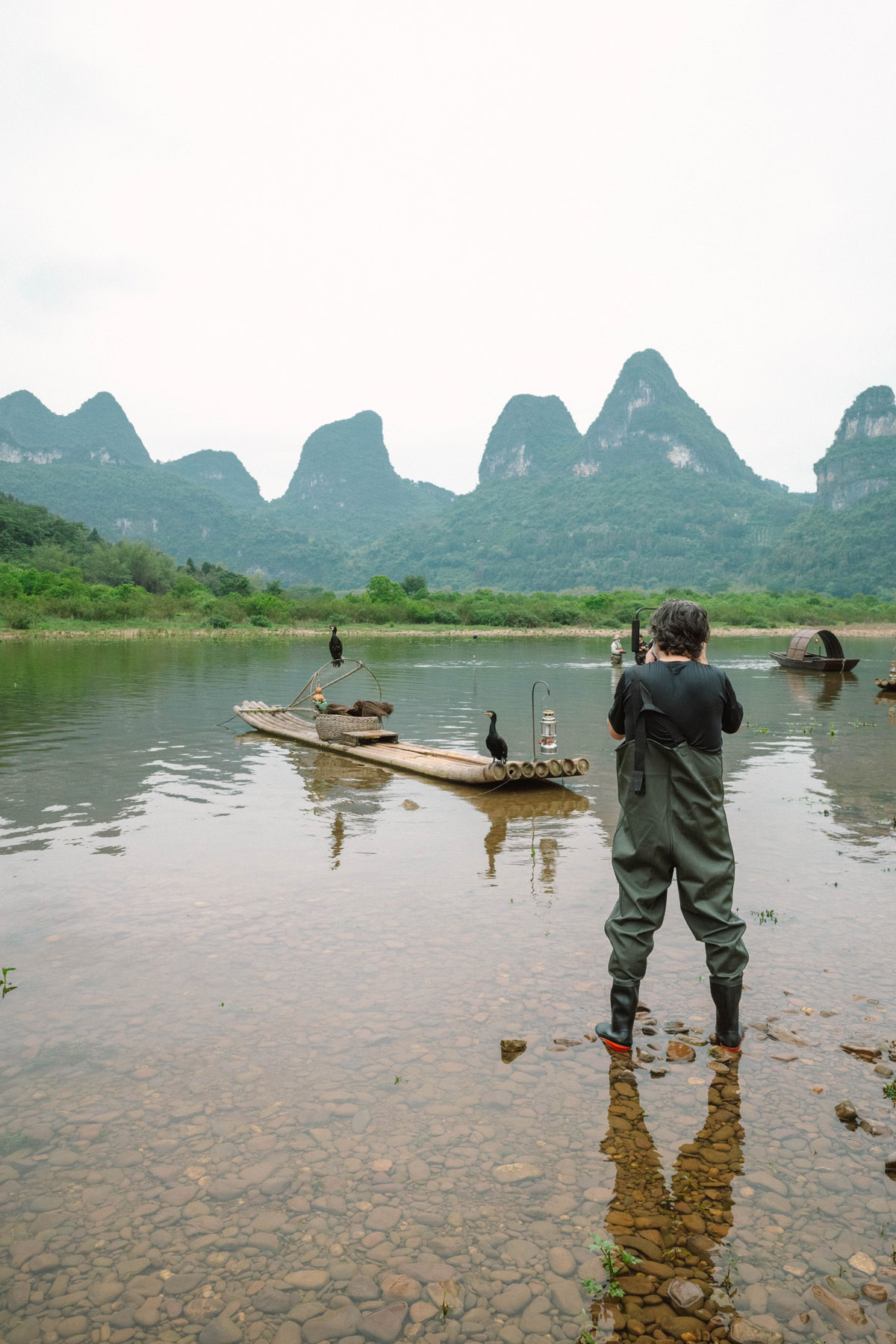
The main draw of the area was the scenic view of the hills and the Li river. It was perhaps one of the most recognizable natural landscapes for Chinese people since it is depicted on the back of the 20 Yuan RMB note. While we were there, tourists flocked to recreate the picturesque image with their cameras, holding up a 20 Yuan note beside their faces. Some tourists even debated which angle was the correct view from which the 20 Yuan note was drawn. It was important that their shot looked like the one in the drawing.
But it wasn’t just the view. The image on the reverse side of the 20 Yuan note has a fisherman on a bamboo raft floating down the Li River. To complete the vision on the 20 Yuan note, there were fishermen with long white beards at the river sitting on their bamboo rafts with their birds which tourists can get on to take a photo if they pay a fee. For tourists, it was a dream come true — they could finally step into the picture on the 20 Yuan note.
As the Louis Vuitton shoot went on, some of the visuals required to be shot in the river, and so a part of the production crew had to don waterproof overalls so that they could work in the water. It wasn’t easy to waddle across the river with all the products and camera equipment. I watched from dry land as the crew carried the Louis Vuitton bags across the river to set up the shot, while Alec Soth and the camera crew figured out the composition standing knee-deep in the river. It was no easy feat.
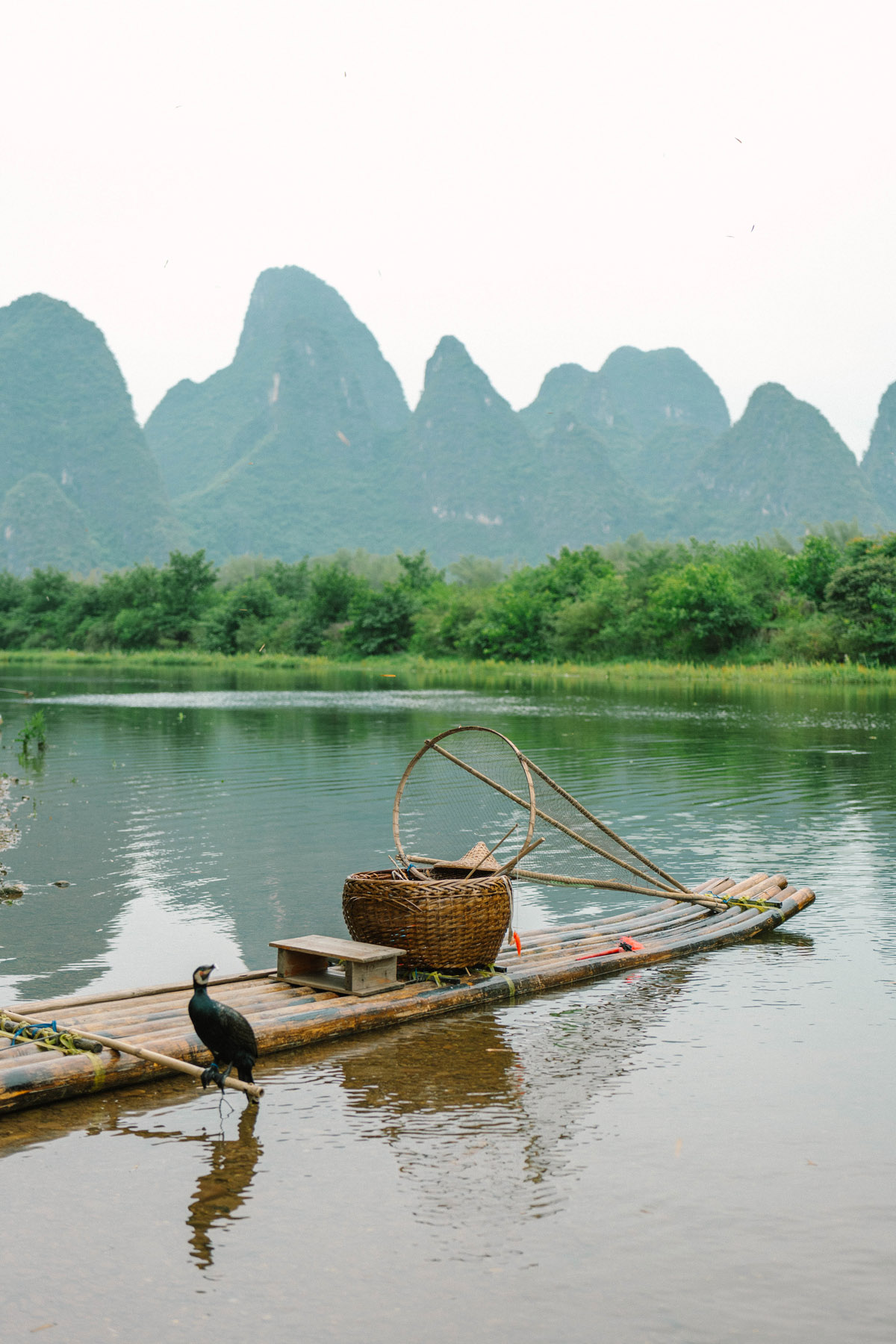
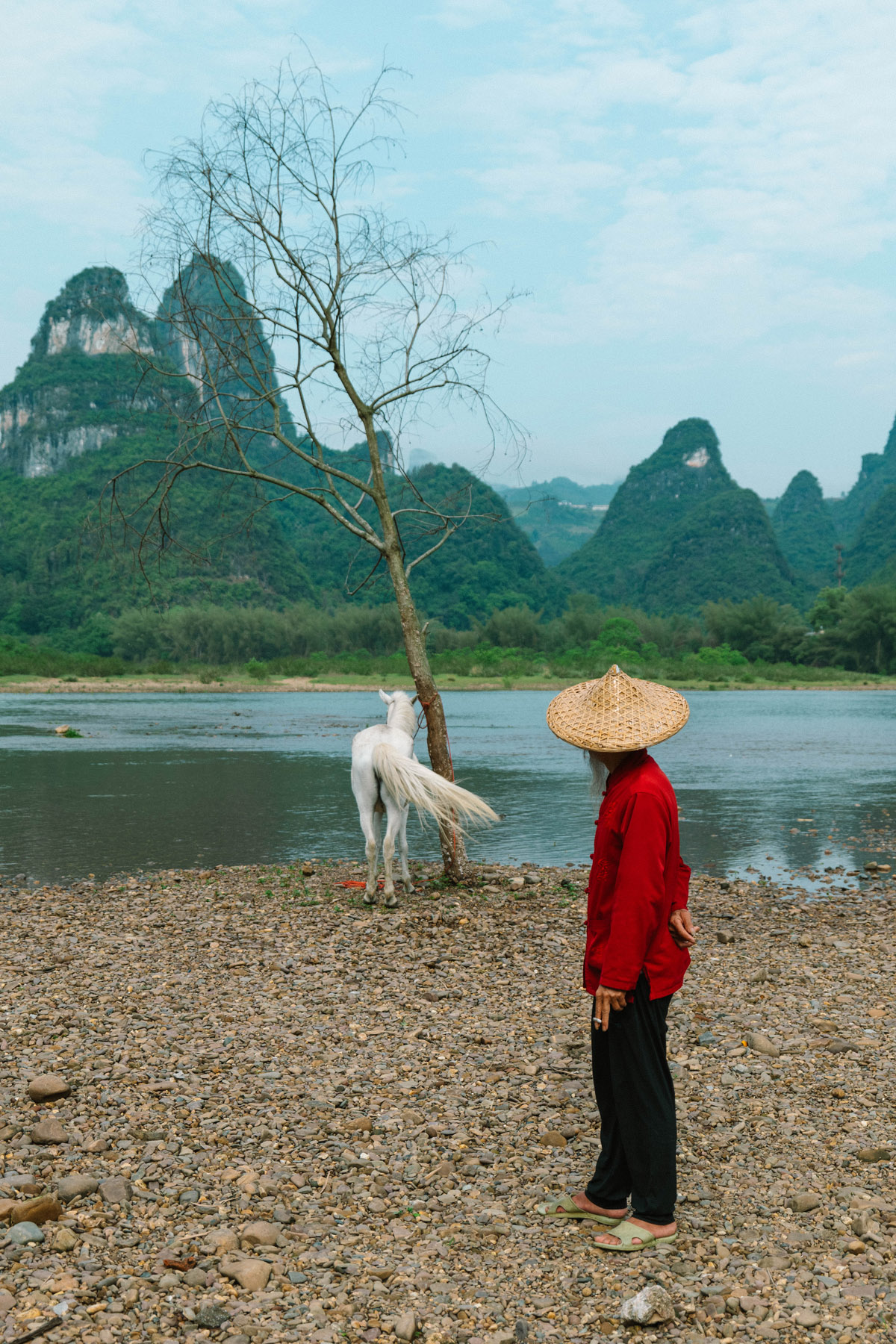
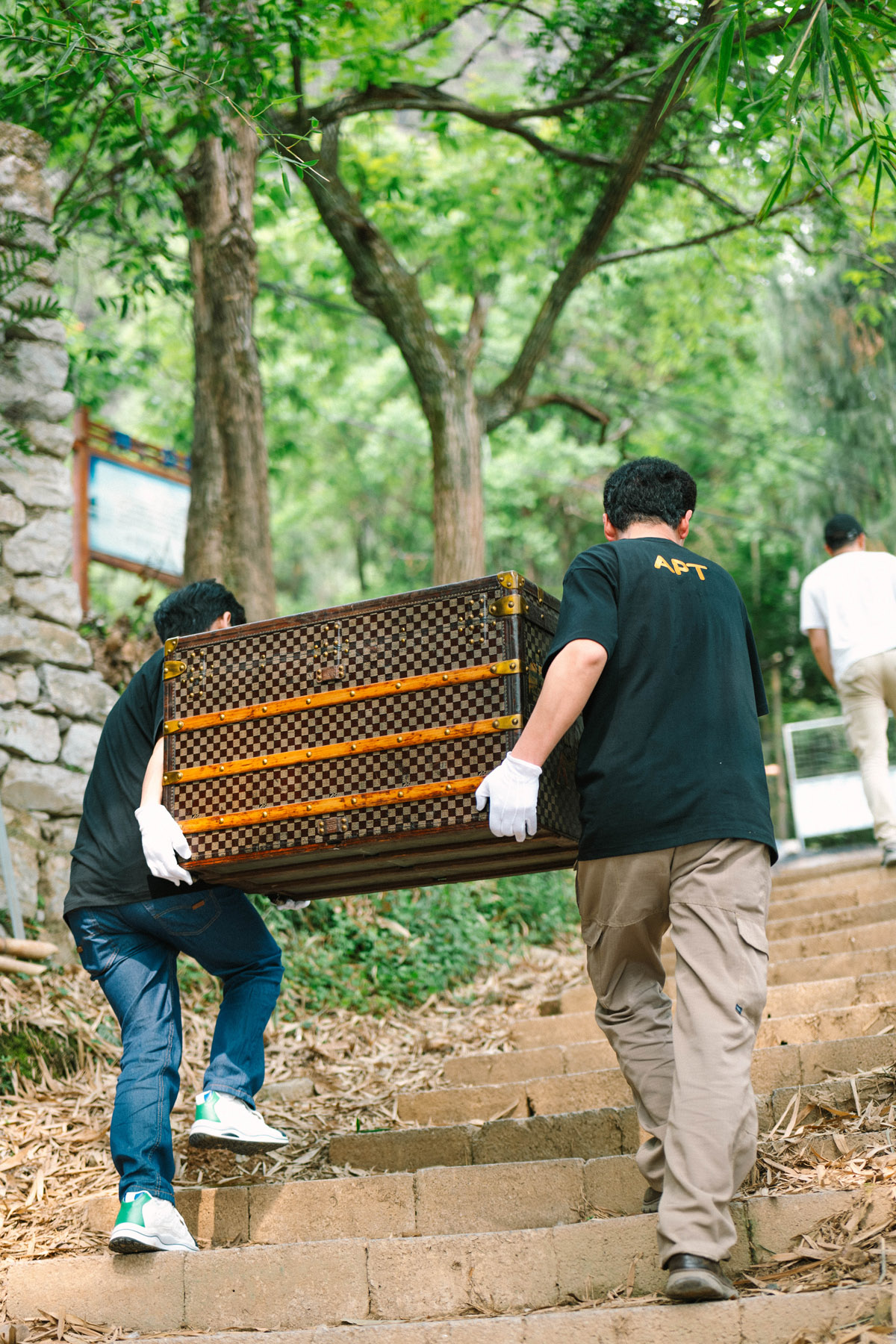
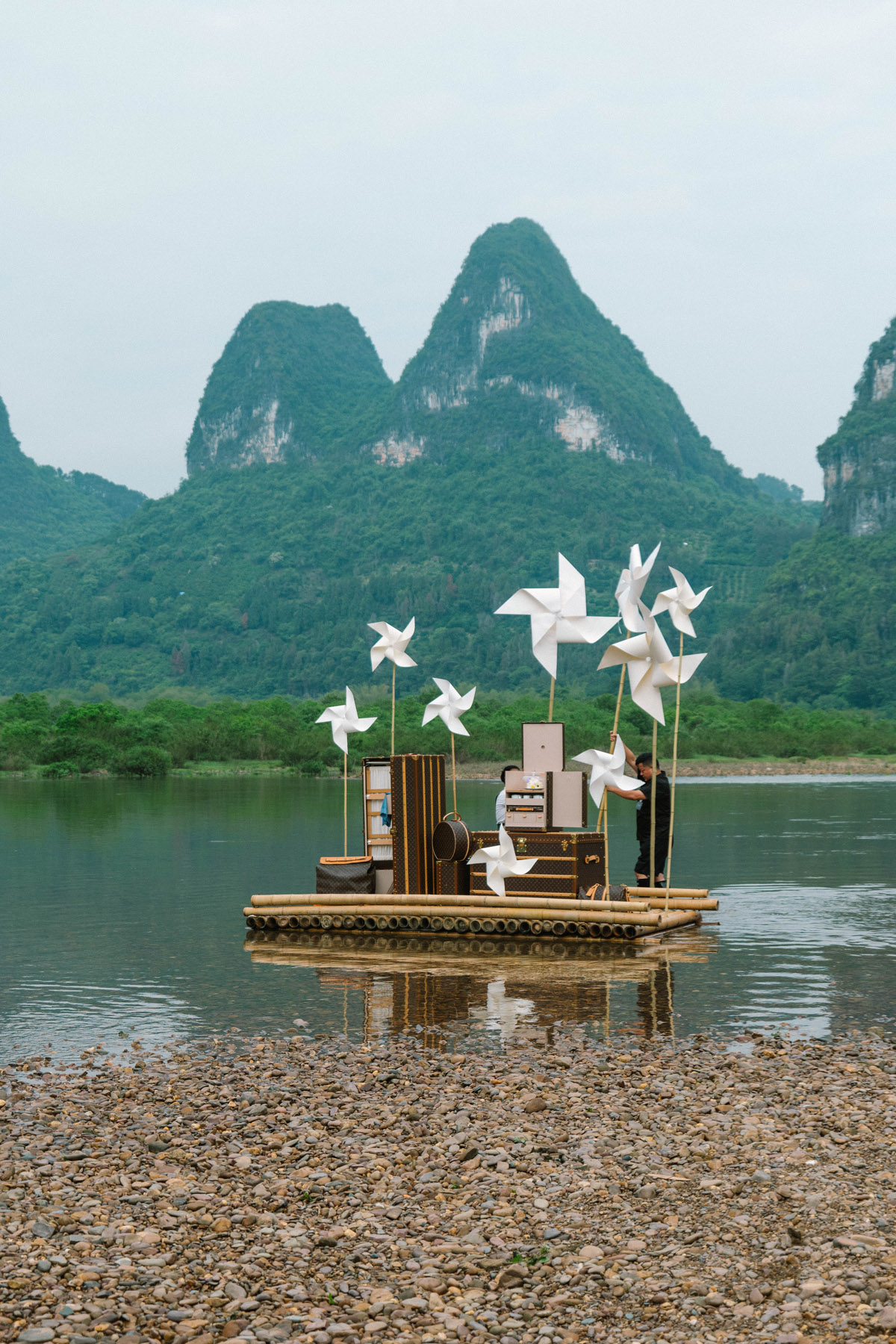
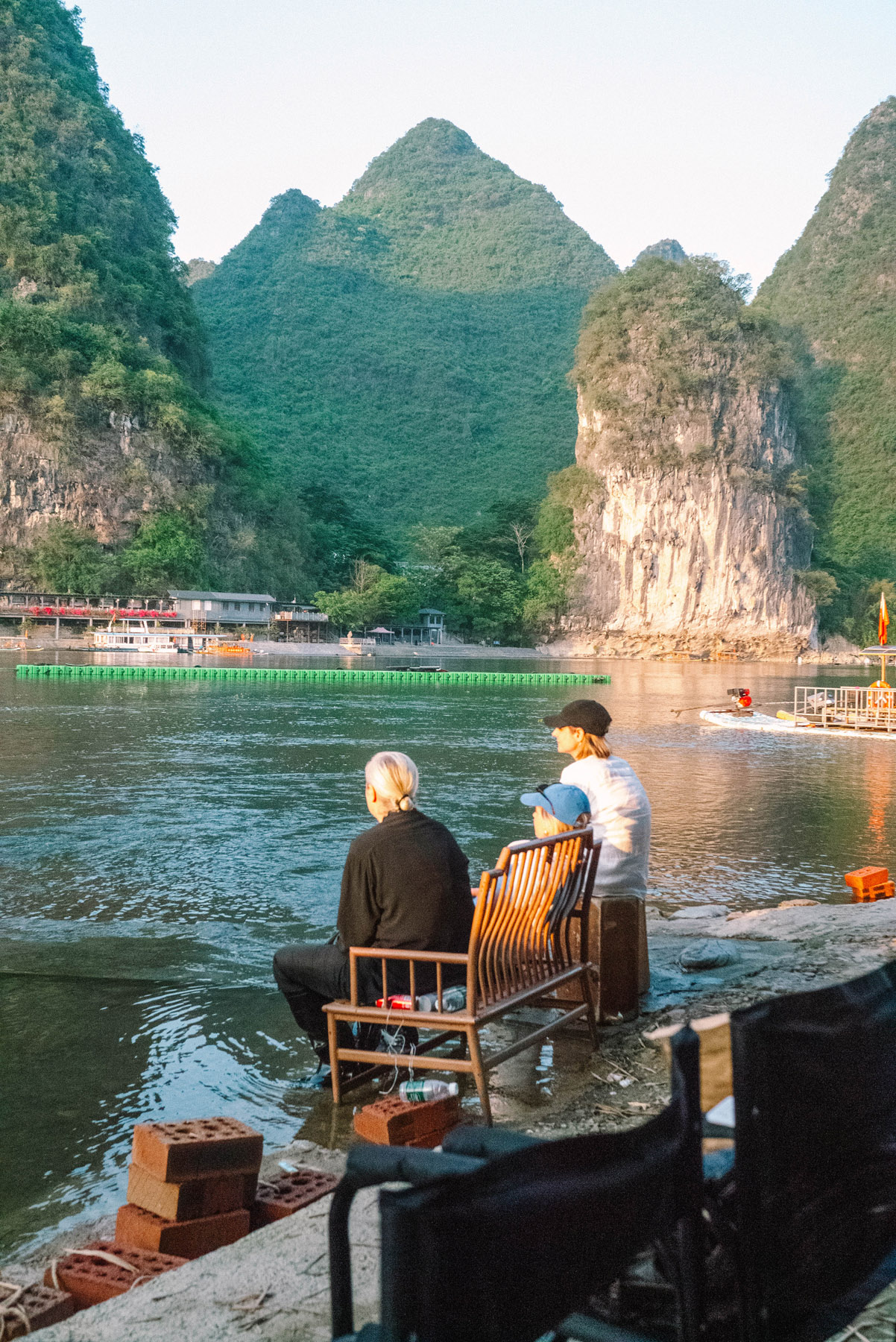
At night, I was lucky enough to join the set design crew for a hearty dinner at one of the local restaurants serving Guangxi food. After many days of sliced noodles in Datong, we were happy to indulge in southern cuisine. When we went back to our hotel after dinner, the set designers hung out in the lobby to assemble a toy train set for the shoot. Apparently the instruction booklet was only in German, so none of us could read it, but the set designers still managed to fix up the train set by intuition. It was charming to see four grown adult men — the set designers — trying to fix up a toy train set, analysing the components and circuits with such seriousness like their life depended on it. When the train finally started moving along the track and shooting out steam, everyone cheered and there was a shared moment of joy on everyone’s faces. It was every boy’s dream.
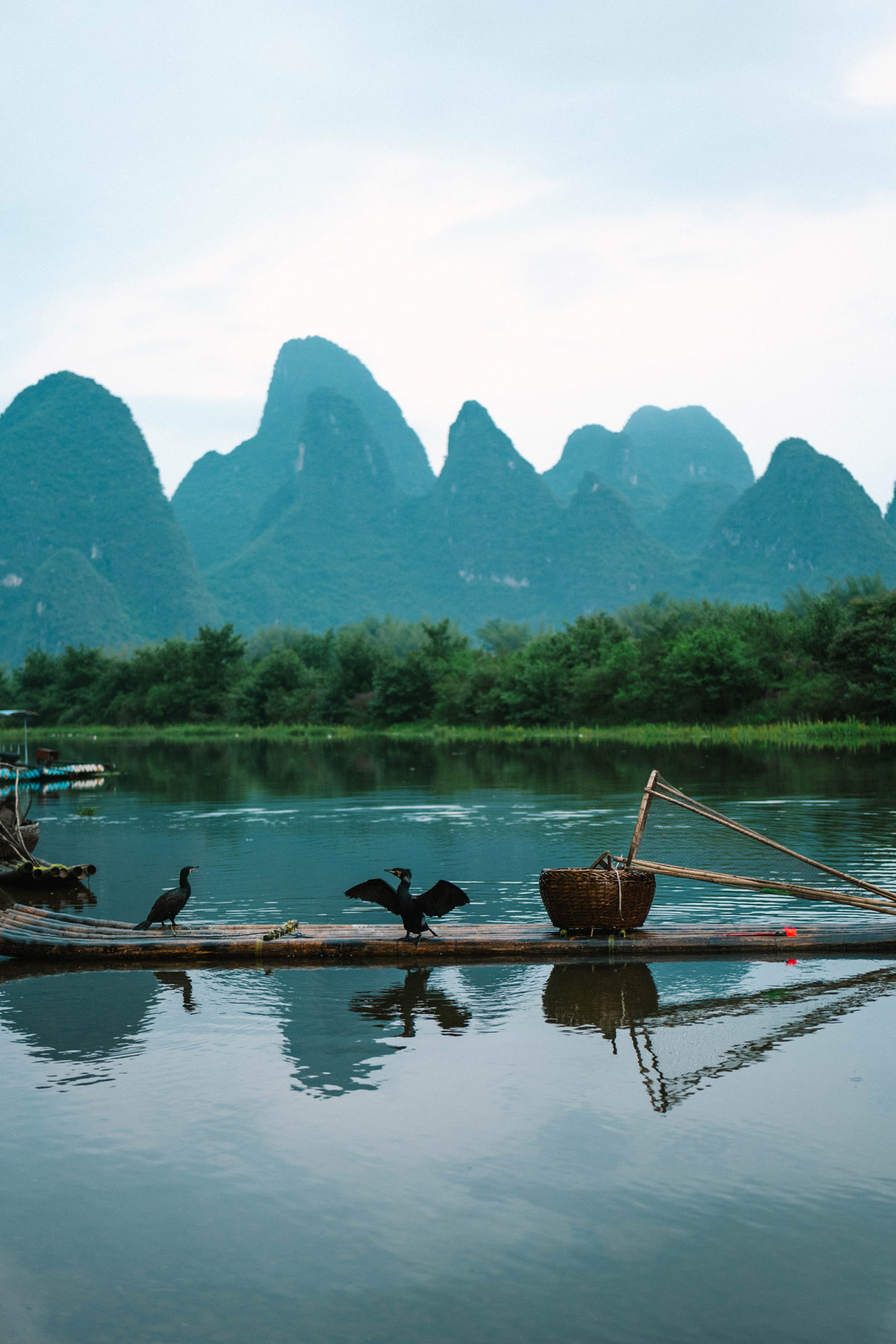
On our second day in Guilin, it rained quite heavily, and for the first time that week, we got to sleep in. It was a much needed rest for the whole crew after all the early mornings and intense production work — we finally had some time to do our laundry. But due to the disruption caused by the rain, our stay in Guilin was extended by one more day.
When we returned to the Li River on the third day, the sun was out and the crew made the most out of the good weather. The shots that day included dreamlike installations of large paper windmills with Louis Vuitton bags and suitcases on a bamboo raft. There were also white horses on set. The sun was glorious that day; surrounded by mystical hills and combined with the mirror reflections on the river surface, the entire location felt somewhat magical and surreal.
For a moment I thought I had entered a Chinese painting.
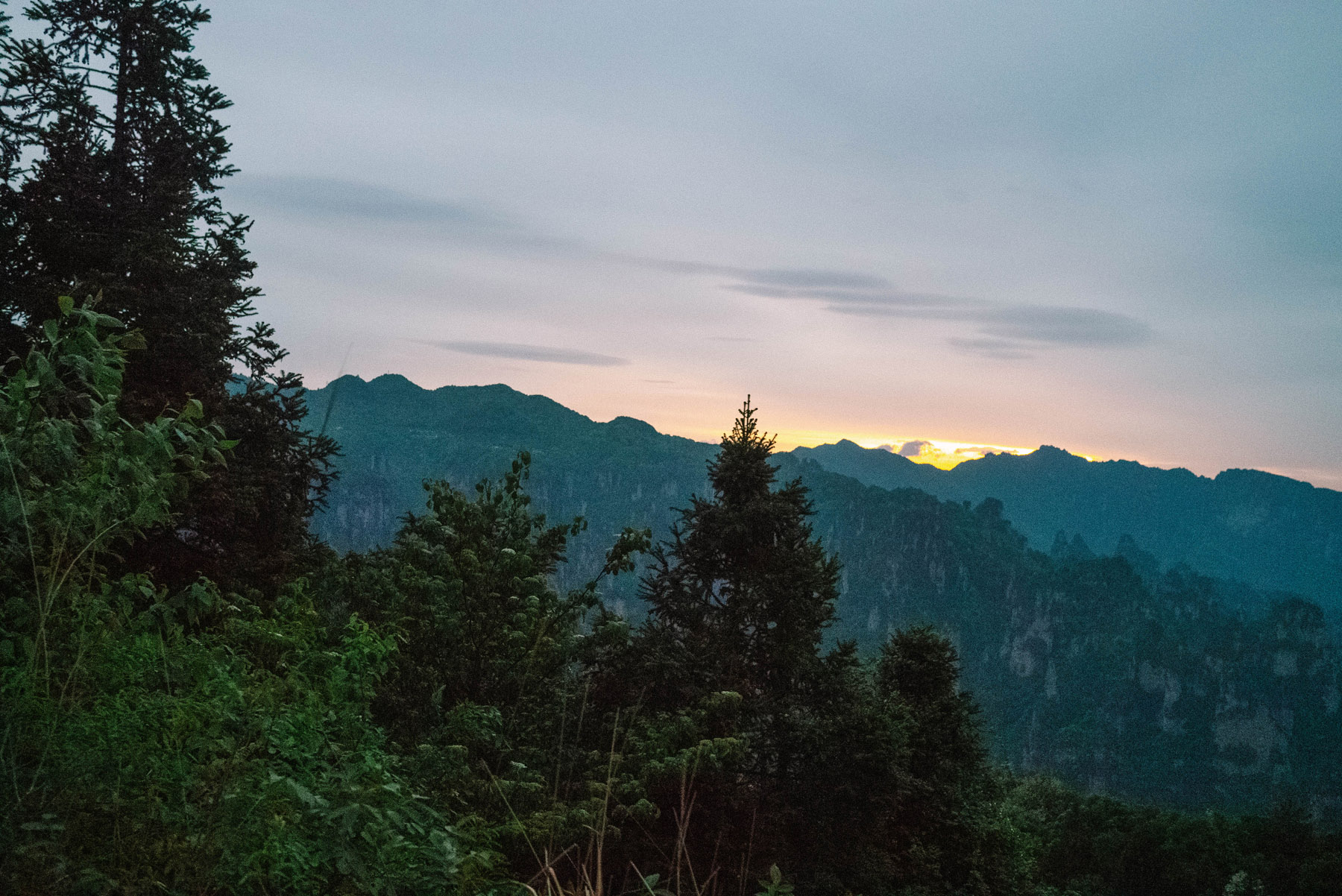
3
ZHANGJIAJIE
OTHERWORLDLY
BEAUTY
Our final shoot location was at Zhangjiajie. It is located in the Hunan province of China, not too far away from Guilin. It still took us an entire day to get there, as we had to fly there and the location was still a few hours’ drive from the airport. By the time we arrived at our hotel, it was already dark.
Because we extended one day in the previous location, we actually lost a day of shooting at Zhangjiajie, and had to finish the final shoot in a single day. Setting off before dawn the next day, like those that came before, the crew was all ready to meet the challenge. We were fortunately blessed with good weather that day, which certainly helped. Upon arrival at the national park, it was a 15-20 minute hike down from the carpark to the different shooting spots, with the crew carrying all the gear and products. As I hiked down the path, I couldn’t help but notice it would be the same way back to the only restroom in the area.
As the crew arrived at the first spot to set up, everyone took a few minutes to take in the scenery. Zhangjiajie’s unique landscape comprised of thousands of jagged sandstone pillars, and they laid out before our eyes like a forest. We stood on a platform high up on one of the pillars, looking down at the landscape, which felt like we were elevating above the clouds. It was otherworldly.
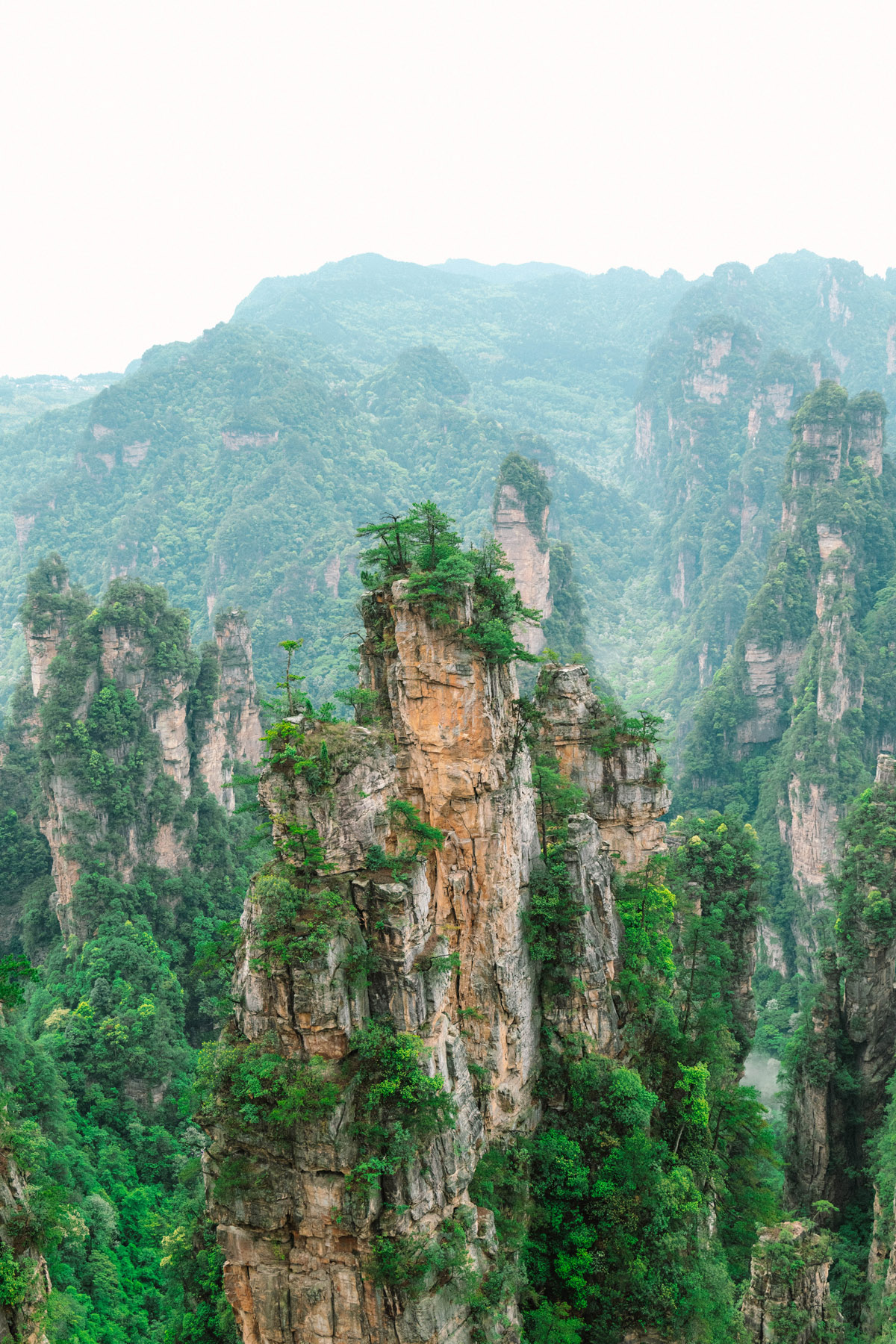
There’s something about heights. When you’re standing above looking down on everything, everything starts to feel so small from the top. Even yourself. You start to feel small among the mountains. It’s humbling. It reminds you of your place in the world. It takes you out of that self-constructed world you have been living in — the one where you think you’re at the centre of the universe. It brings you back to reality.
For Jake Sully, this place became his new reality — Pandora. Zhangjiajie was the main inspiration for the floating “Hallelujah Mountains” in the movie “Avatar”. At the location there were signs and photographs that showed where you could take similar shots from the movie. I wondered if there might be blue people walking around for tourists to take photos with.
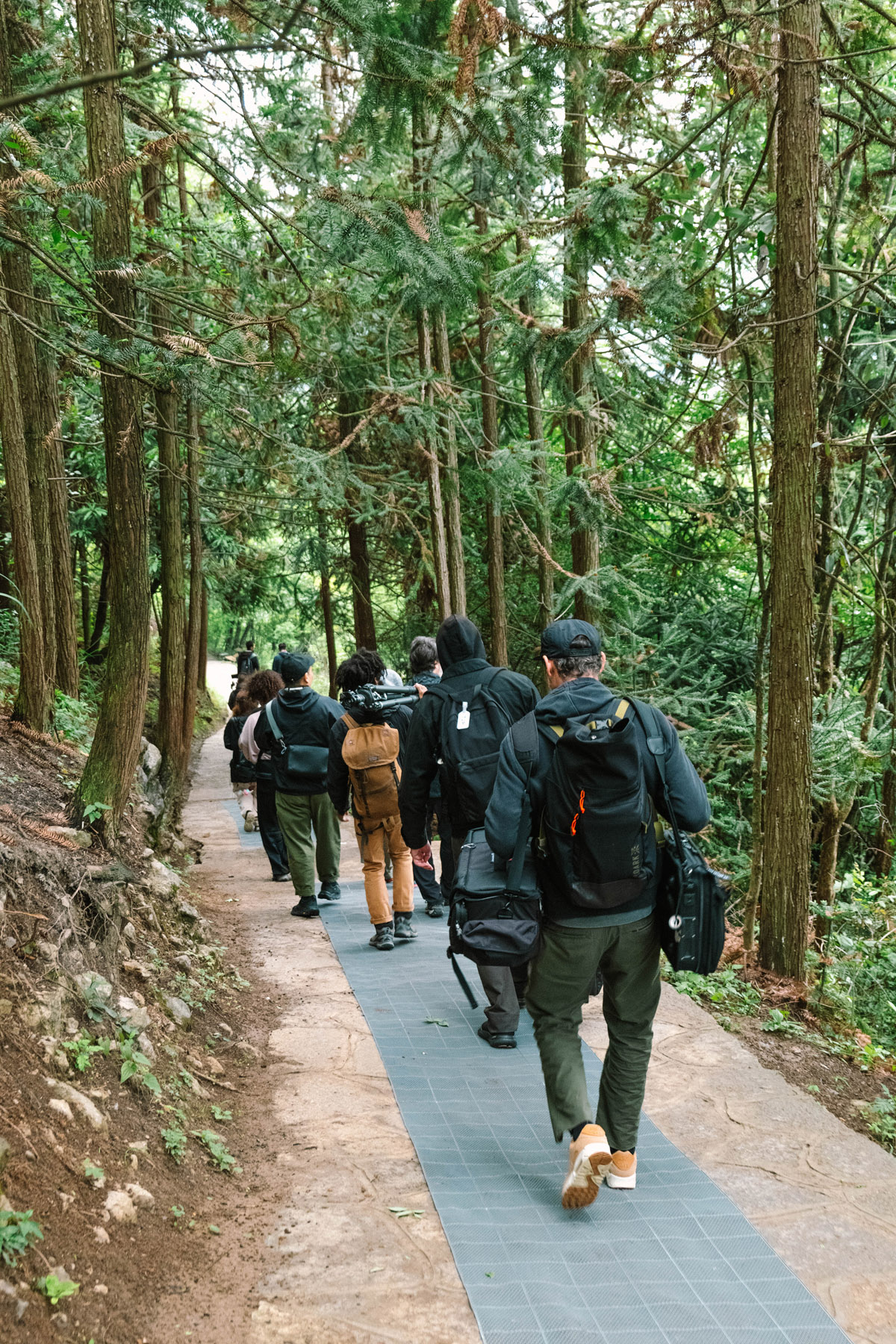
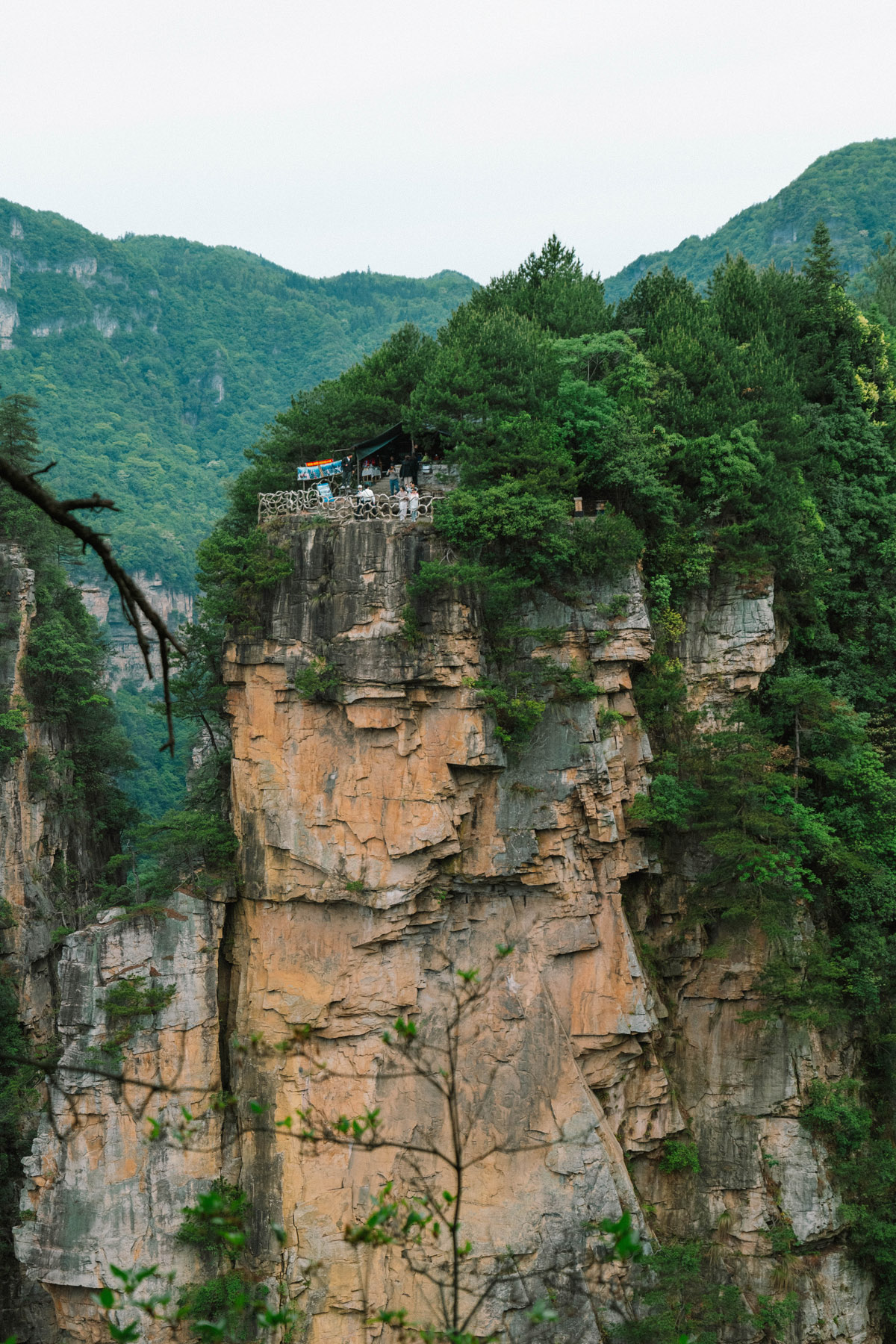
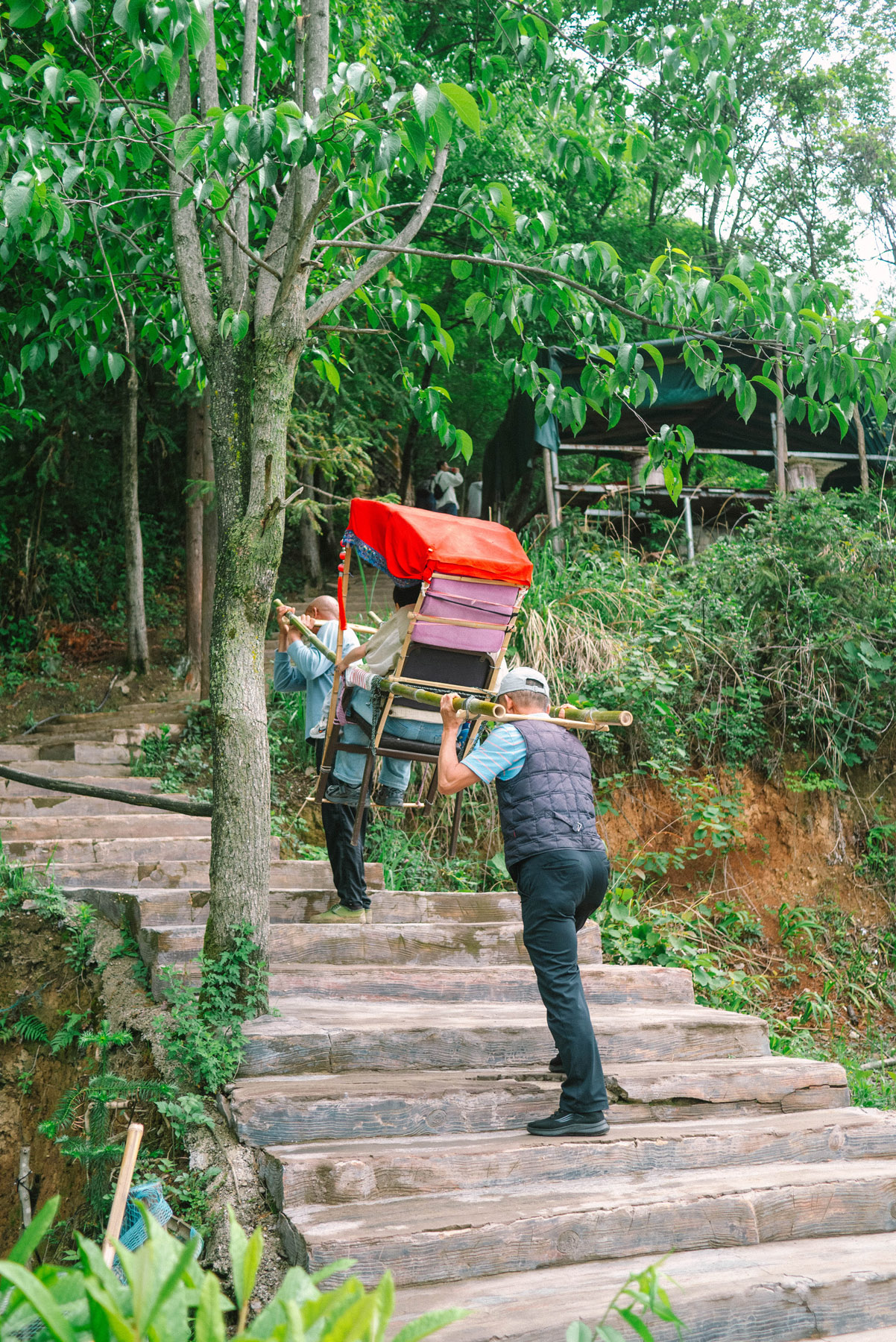
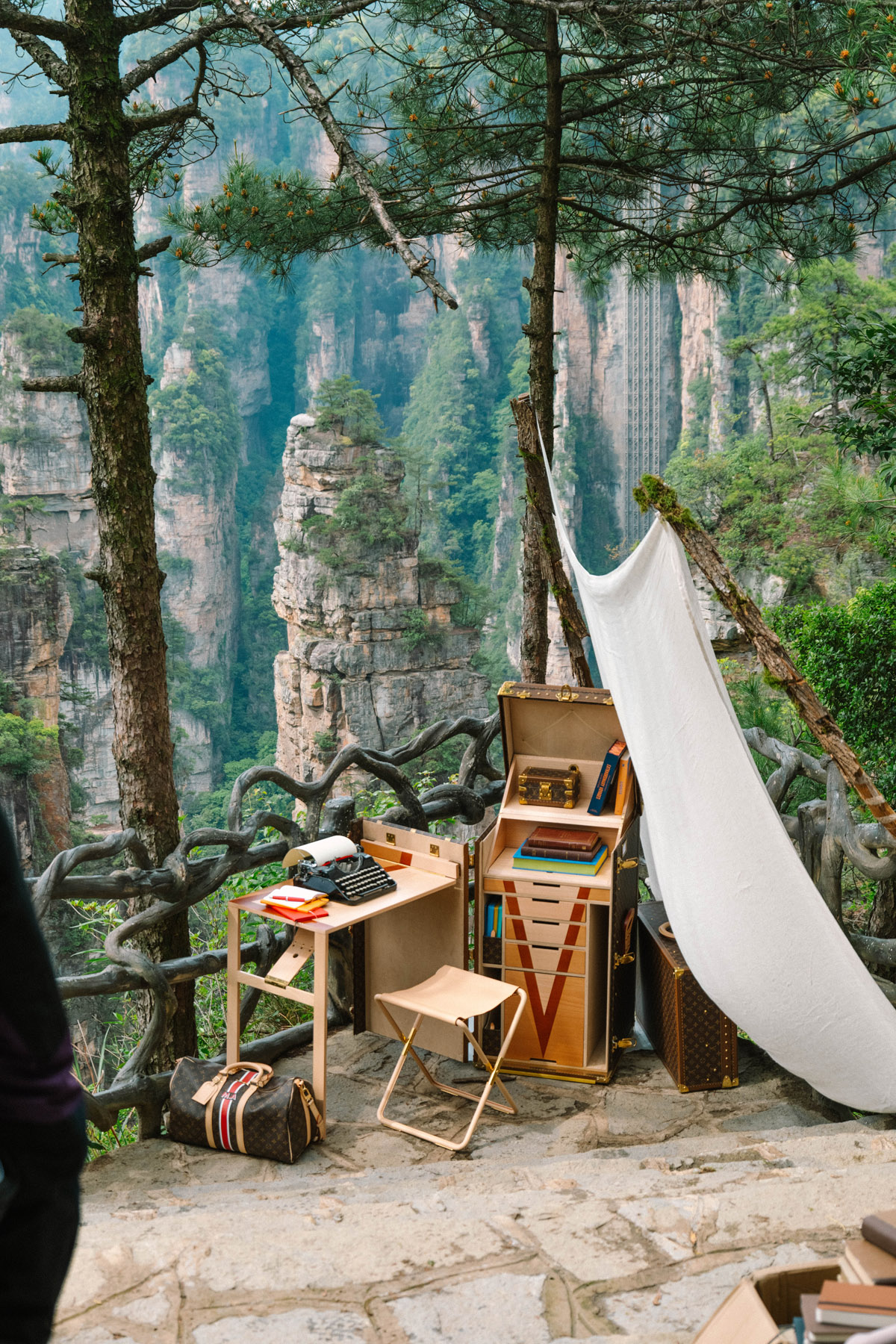
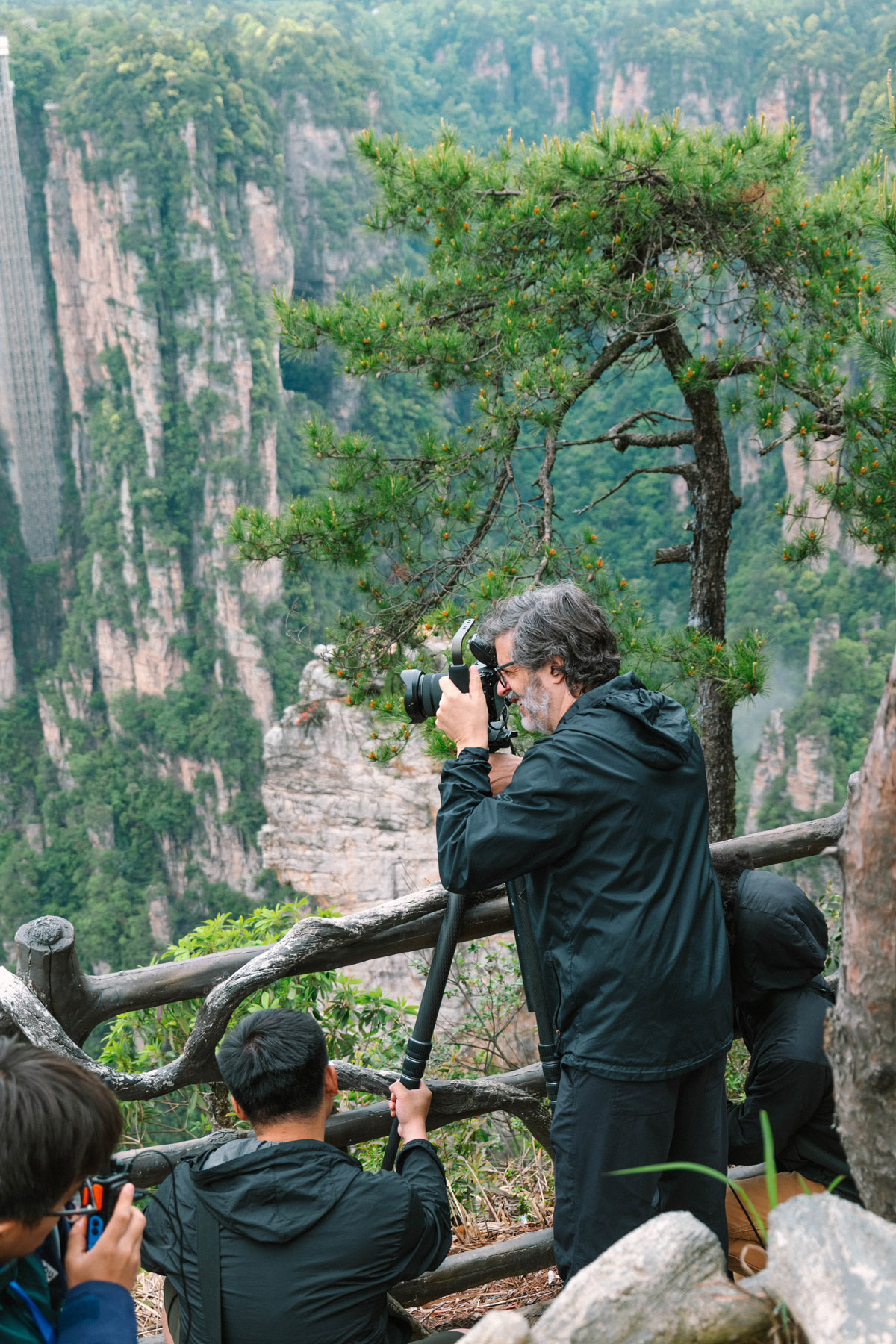
As the team worked hard to construct the beautiful shots for Louis Vuitton, there were countless tourists right next to us at Zhangjiajie shooting photographs of the landscape and also of themselves. It was fascinating to see the two types of photography happening side by side. Perhaps they were not so different after all — everyone was entitled to construct their own reality or fantasy.
One of my favourite shots from this location was the one with a hammock. Initially, the crew had some difficulty tying the hammock to a tree which was a little bit too far from the platform. One mistake and you would drop all the way down. Later on, fortunately, we got help from one of the mountain rescuers to do the job. Just watching how the mountain rescuer skillfully climb onto the tree like a koala was a spectacle in itself. When the shot was finally set up against the backdrop of the Zhangjiajie landscape, with the hammock swaying between two trees and a Louis Vuitton bag placed on it, it looked like an impossible dream. There was a childlike innocence to the whole set up, as if someone was daydreaming wishfully: “What if?”
Perhaps travel is about seeing otherworldly beauty in the ordinary — to see a world full of infinite possibilities. Or at least remembering what that feels like.
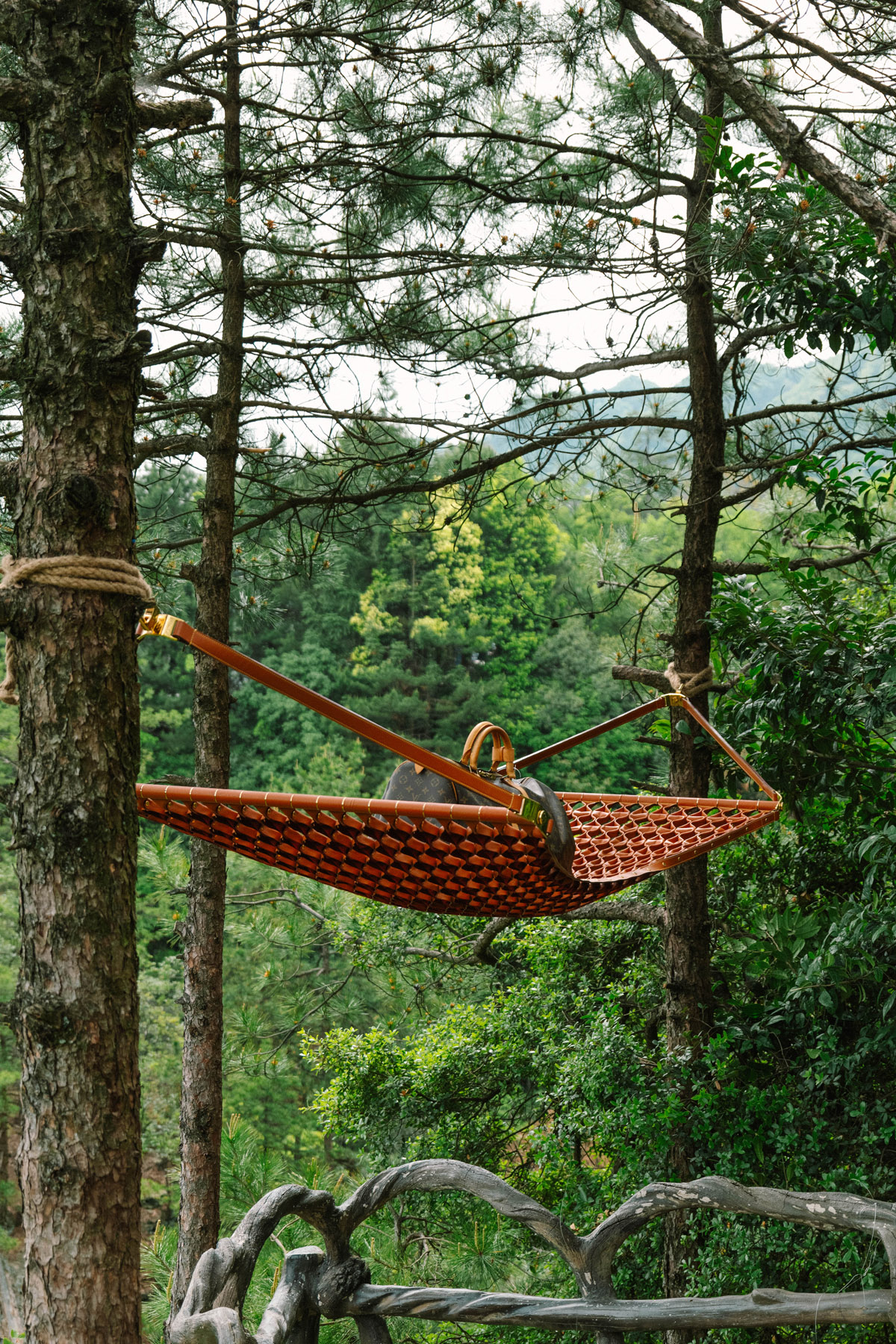
After nine days of intense travel, the shoot was finally over. As we travelled across different parts of China, we stepped into myths, paintings and other worlds. This journey was also a story in itself, and I knew that months from now, when we see the Louis Vuitton billboards up at the airport, we will remember how we were there behind the scenes, creating a timeless vision and dream for future travellers.
IN SEARCH OF DREAMS was produced by LOST in partnership with Louis Vuitton. The print version of the article can be found in LOST ISSUE ELEVEN. Read the Chinese version online here.